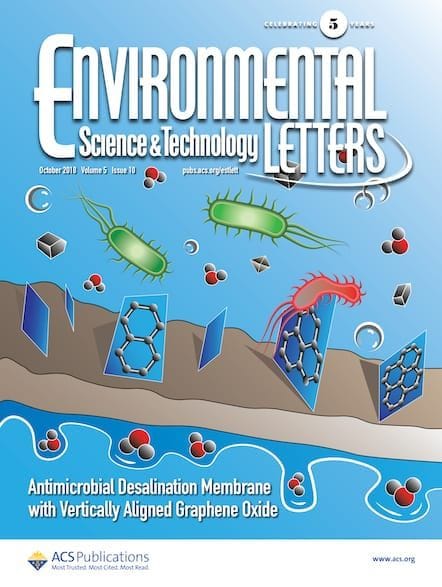Wax melts have been positioned as a safer alternative to traditional candles, but although they may reduce fire risks, new research uncovers other indoor health and safety considerations.

The U.S. Environmental Protection Agency estimates that the average American spends about 90% of their life indoors, whether in our homes, workplaces, vehicles, or leisure spaces.1 And many of us like our indoor spaces to smell nice, often using scented products on a regular basis to mask the smells of cooking or pets, establish a "signature scent" for our homes, or create a pleasant sensory experience.
Wax melts have seen a growth in popularity in recent years, marketed as a safer choice compared to candles since they do not require an open flame. In 2023, the global market size of wax melts was valued at $3.47 billion USD, with a projected growth rate of 6.1% through 2030.2 Although they may reduce fire risks, there are other health considerations to take into account: compared to traditional candles, wax melts release more airborne scent compounds since direct heating maximizes the melted surface area.3 In the United States, the EPA regulates the emissions of volatile organic compounds (VOCs) from products, including air fresheners and scented candles, and manufacturers are supposed to ensure that their products do not exceed permissible levels. But various dynamics contribute to air quality and exposures, and our understanding of indoor chemicals is much more limited than that for the outdoor environment.4
Now, new work published in Environmental Science & Technology Letters describes how aroma compounds released from melting wax can react with ozone to form potentially toxic particles in our indoor spaces.5 The VOCs released from wax melts primarily consist of monoterpenes and their oxidized forms, monoterpenoids. In indoor environments, these VOCs can react with ozone, resulting in the nucleation and subsequent growth of nanoparticles.

Flame-Free Candles Are Not Pollution-Free: Scented Wax Melts as a Significant Source of Atmospheric Nanoparticles
DOI: 10.1021/acs.estlett.4c00986
To investigate this, the team used two techniques: a high-resolution particle size magnifier-scanning mobility particle sizer to achieve real-time monitoring of indoor atmospheric nanoparticle size distributions, and a proton transfer reaction time-of-flight mass spectrometer to look at terpene mixing ratios. Their results revealed that the terpenes released from scented wax melts do indeed react with ozone and result in significant indoor atmospheric nanoparticle concentrations comparable to those emitted by traditional scented candles—and also comparable to gas stoves, diesel engines, and natural gas engines. The team noted that melting unscented wax did not result in terpene emissions or nanoparticle formation, indicating that the aroma compounds are the primary contributors. These findings challenge the perception of wax melts as a safer alternative and suggest that the newly formed nanoparticles could be responsible for significant respiratory exposures.
Previous work from the same team focusing on scented VOCs has shown that high particle nucleation rates significantly increase the concentrations of indoor atmospheric nanocluster aerosols, which can efficiently reach the deepest regions of the human respiratory system.6 As with their newer wax melt study, they found a link with respiratory exposures and dose rates comparable to or exceeding those from sources such as gas stoves or diesel engines.
Further Explorations: Indoor Air Pollution
Beyond wax melts, our homes can contain many other scented products, including cleaning supplies. And we've looked before at the dirty truth about indoor cleaning products and the range of compounds they release that can impact air quality. Linalool, a high-reactivity volatile chemical product often found in cleaning sprays and disinfectants, is increasingly being recognized as an emerging contaminant. A recent article published in Environment & Health investigates the differences in how linalool undergoes gas-phase oxidation under indoor vs. outdoor conditions. Indoors, these reactions can lead to the formation of secondary organic aerosols (SOAs), many of which are more toxic than linalool itself and pose risks such as cancer and respiratory problems. They also break down much more slowly indoors, prolonging these hazardous conditions.
But even natural products release VOCs—just peeling an orange releases limonene, a type of monoterpene that can result in highly oxidized multifunctional compounds upon reacting with ozone. Another study has looked into how limonene reacts with ozone indoors—specifically, inside a university art museum—leading to the formation of highly oxidized multifunctional compounds, and subsequently, harmful SOAs.
Botanical-based disinfectants are hailed as natural alternatives to traditional chemical products—and they are effective against microbes and viruses on surfaces—but again, they can negatively impact our air chemistry. Mixing ratios of both monoterpenes and monoterpenoids increase suddenly, and as was seen with the wax melts, these react with ozone to create new particles, with large deposited doses in the respiratory tract.9
Submit Your Research on Indoor Air Quality and Pollution
The teams across these studies note that the growing body of evidence highlights the need for further research on the toxicological properties of newly formed nanoparticles so that we can better understand the environmental health implications. And as we work to adapt to our changing climate, people will need more information on the best ways to improve the air quality in their homes, schools, and workplaces.
Both ACS ES&T Air and Environment & Health are currently seeking contributions for upcoming Special Issues that will showcase new innovations and insights on indoor air pollution exposure, health risks, and mitigation. These Special Issues will provide a platform for researchers to share their latest findings, discuss technological challenges, review work in the field, and outline future directions in this critical area of indoor air chemistry research. Learn more about how to submit your work below.

Call For Papers: Indoor Air Pollution, Health Effects and Mitigation
Submission Deadline: August 31, 2025

Call For Papers: Indoor Air Chemistry in the Context of a Changing Climate
Submission Deadline: September 30, 2025
References
- Indoor Air Quality (IAQ). United States Environmental Protection Agency 2025. https://www.epa.gov/indoor-air-quality-iaq.
- Wax Melts Market Size, Share & Trends Analysis Report By Product (Paraffin, Soy Wax, Palm Wax, Beeswax), By Pack (Single Pack, Multi-Pack), By Application (Household, Commercial), By Region, And Segment Forecasts, 2024 - 2030. Grand View Research, https://www.grandviewresearch.com/industry-analysis/wax-melts-market.
- Liu, J. et al. Real-Time Evaluation of Terpene Emissions and Exposures during the Use of Scented Wax Products in Residential Buildings with PTR-TOF-MS. Build. Environ. 2024, 255, 111314.
- Habre, R. et al. Why Indoor Chemistry Matters: A National Academies Consensus Report. Environ. Sci. Technol. 2022, 56, 15, 10560–10563.
- Patra, S. S. et al. Flame-Free Candles Are Not Pollution-Free: Scented Wax Melts as a Significant Source of Atmospheric Nanoparticles. Environ. Sci. Technol. Lett. 2025, 12, 2, 175–182.
- Patra, S. S. et al. Rapid Nucleation and Growth of Indoor Atmospheric Nanocluster Aerosol during the Use of Scented Volatile Chemical Products in Residential Buildings. ACS EST Air 2024, 1, 10, 1276–1293.
- Fu, Z. et al. Oxidation Mechanism and Toxicity Evolution of Linalool, a Typical Indoor Volatile Chemical Product. Environ. Health 2024, 2, 7, 486–498.
- Pagonis, D. et al. Autoxidation of Limonene Emitted in a University Art Museum. Environ. Sci. Technol. Lett. 2019, 6, 9, 520–524.
- Jiang, J. et al. Real-Time Measurements of Botanical Disinfectant Emissions, Transformations, and Multiphase Inhalation Exposures in Buildings. Environ. Sci. Technol. Lett. 2021, 8, 7, 558–566.
